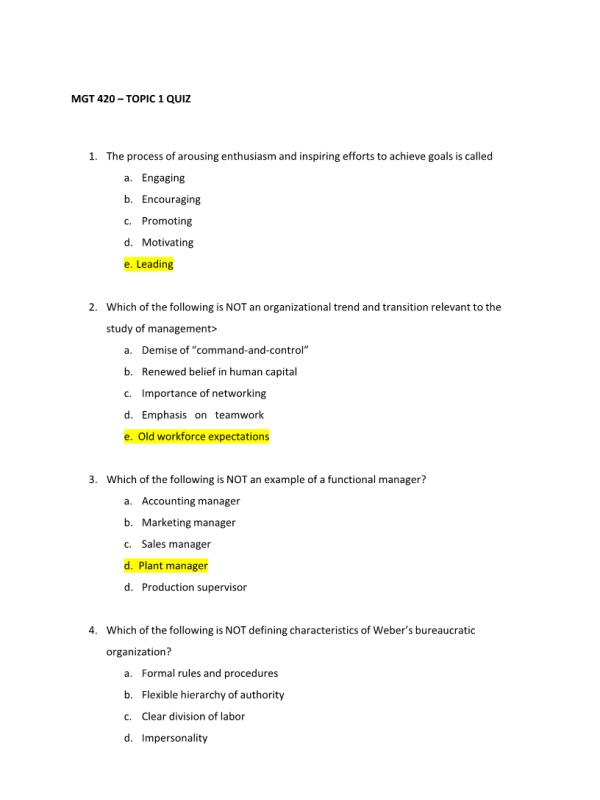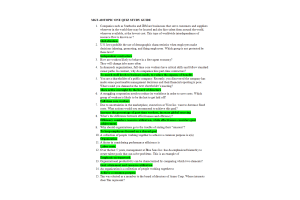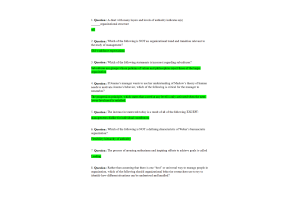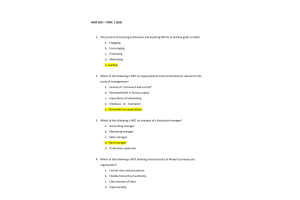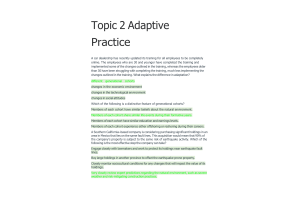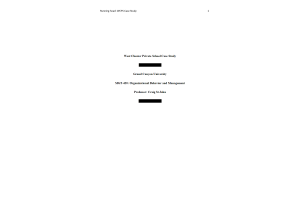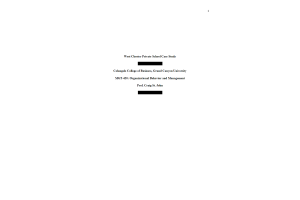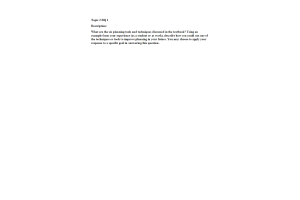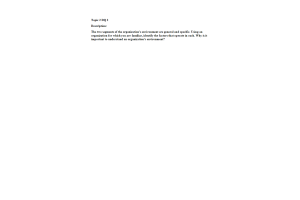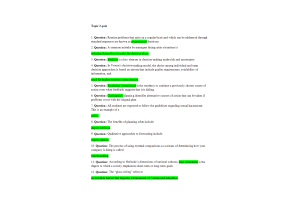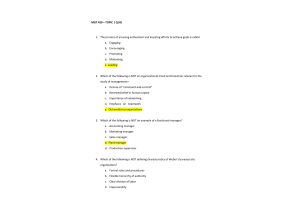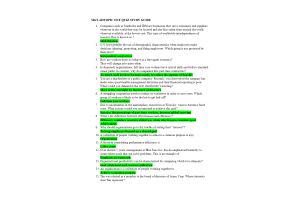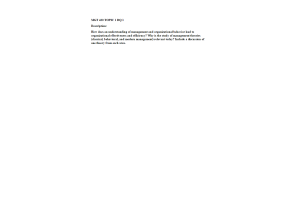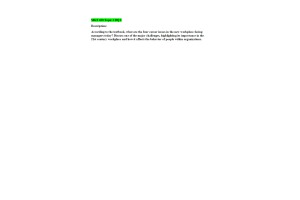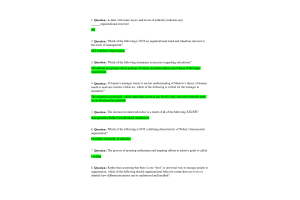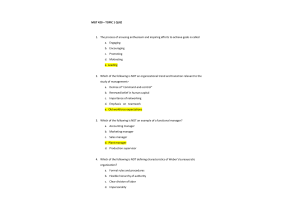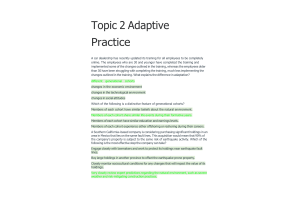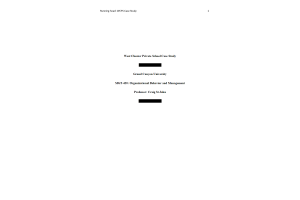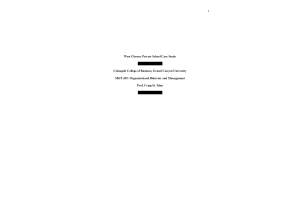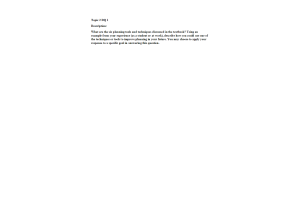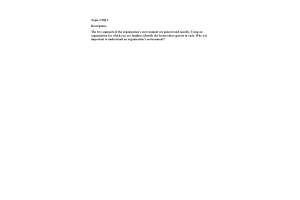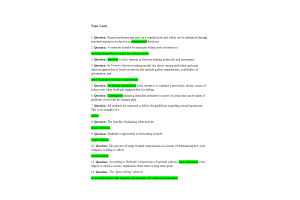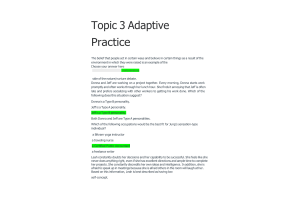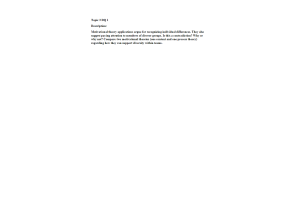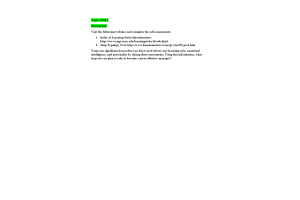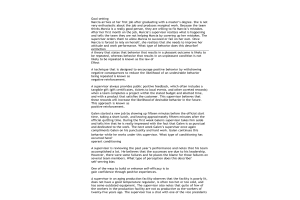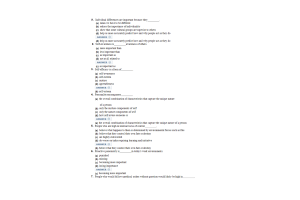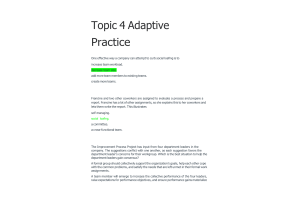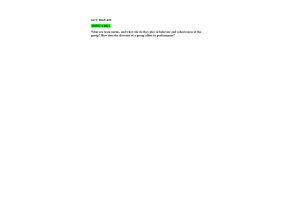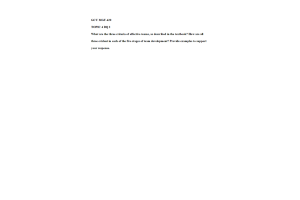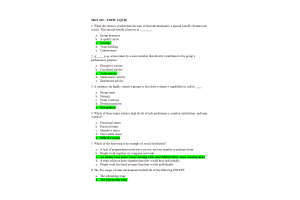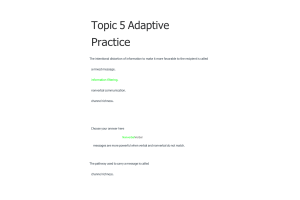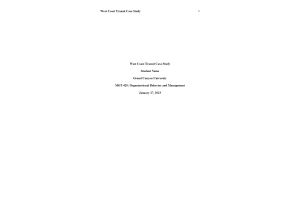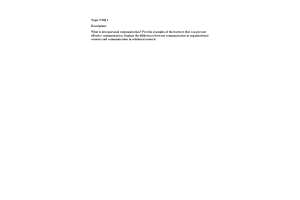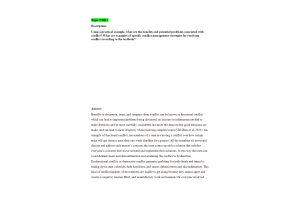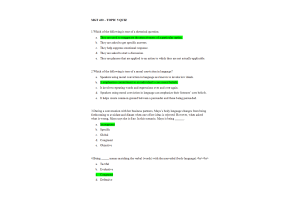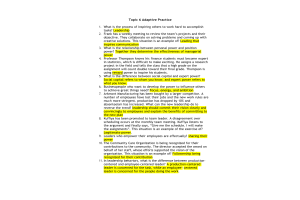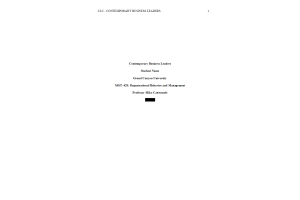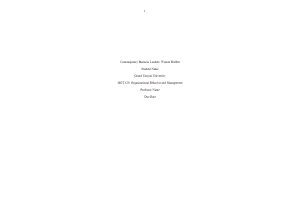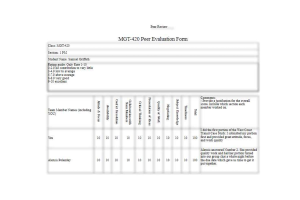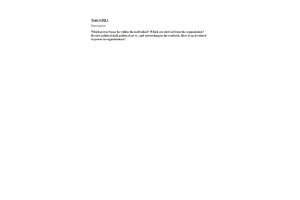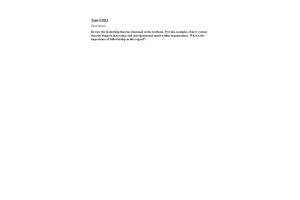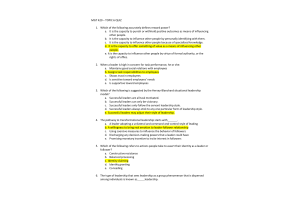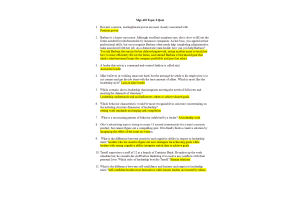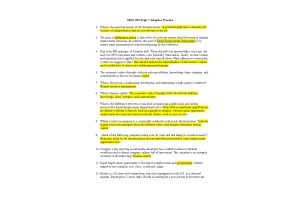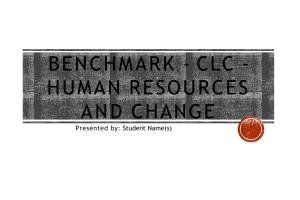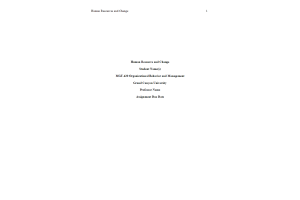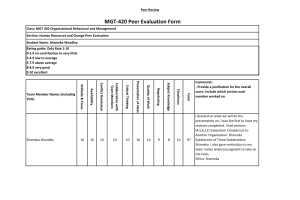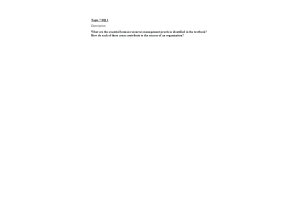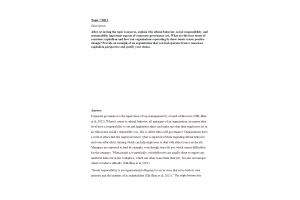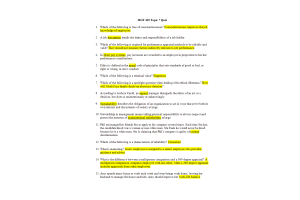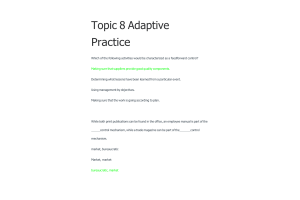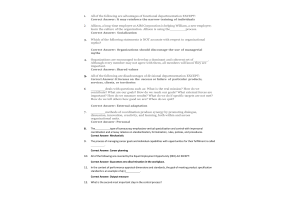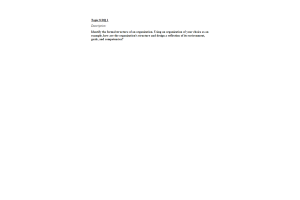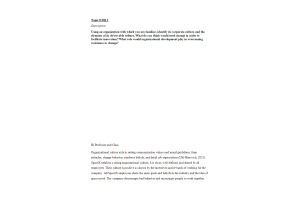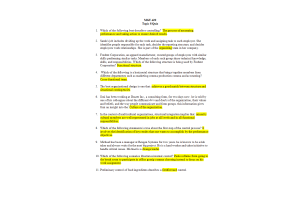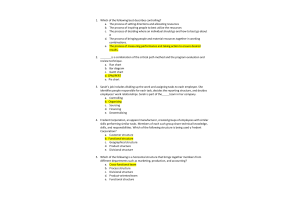MGT 420 Topic 1 Quiz plus Quiz Study Guide
- $30.00
MGT 420 Topic 1 Quiz
- Question: The process of arousing enthusiasm and inspiring efforts to achieve goals is called
- Question: Which of the following is NOT an organizational trend and transition relevant to the study of management?
- Question: Which of the following is NOT an example of a functional manager?
- Question: Which of the following is NOT defining characteristics of Weber’s bureaucratic organization?
- Question: If Joanna’s manager wants to use her understanding of Maslow’s Theory of Human Needs to motivate Joana’s behavior, which of the following is critical for the manager to remember?
- Question: Learning organizations are characterized by which of the following core ingredients?
- Question: The increase in teamwork today is a result of all of the following EXCEPT:
- Question: Rather than assuming that there is one “best” or universal way to manage people in organizations, which of the following should organizational behavior researchers use to try to identify how different situations can be best understood and handled?
- Question: A chart with many layers and levels of authority indicates a(n) organizational structure.
- Question: Which of the following statements is INCORRECT regarding subculture?
MGT 420 Topic 1 Study Guide
1. Question: A chart with many layers and levels of authority indicates a(n) ______
2. Question: Which of the following is NOT an organizational trend and transition relevant to the study of management?
3. Question: Which of the following statements is incorrect regarding subcultures?
4. Question: If Joanna’s manager wants to use her understanding of Maslow’s theory of human needs to motivate Joanna’s behavior, which of the following is critical for the manager to remember?
5. Question: The increase in teamwork today is a result of all of the following EXCEPT:
6. Question: Which of the following is NOT a defining characteristic of Weber’s bureaucratic organization?
7. Question: The process of arousing enthusiasm and inspiring efforts to achieve goals is called
8. Question: Rather than assuming that there is one “best” or universal way to manage people in organization, which of the following should organizational behavior researchers use to try to identify how different situations can be understood and handled?
9. Question: Learning organizations are characterized by which of the following core ingredients?
10. Question: Which of the following is NOT an example of a functional manager?
11. Question: Embracing diversity within an organization, rather than simply “meeting quotas” may allow the organization to achieve which benefit?
12. Question: Productivity is _____ of work performance, with resource utilization considered
13. Question: At a typical non-profit organization, the _____ oversees the work of the president
14. Question: Paul is a recording studio manager who needs one of his sound technicians to master a recently recorded album by the end of the workday. What ability will Paul most keep in mind when selecting a technician?
15. Question: The statement, “it can be very efficient, but often at the expense of flexibility,” is an accurate evaluation of which management approach?
16. Question: You are developing a start-up company that plans to offer a new, highly secure financial transaction service, which must be seen as trustworthy and reliable in order to be successful. Which of the following would be a reason for you to set the company up as a bureaucracy?
17. Question: Needs such as security, protection, and stability are examples of ______ needs
18. Question: Two adults in their forties were recently laid off from the factory that they worked at for 15 years. They want to be able to find better jobs and be more successful in their future careers. How can organizational behavior help them?
19. Question: A direct line of authority for conducting the major business of the organization is known as _____
20. Question: Which of the following statements accurately describes organizational culture?
